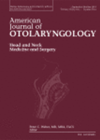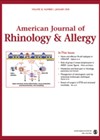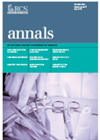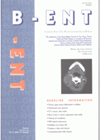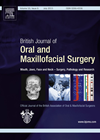
Journal Reviews archive for November 2015
Are organ-preserving treatment strategies for T3 laryngeal cancers reducing patient survival?
This article presents the 10-year results of a single institution’s treatment of advanced laryngeal cancer. The institution established a protocol based on the Dutch Head and Neck Society consensus document on laryngeal cancer diagnostics and treatment published in 1991. This...
Smaller gauge voice prosthesis is effective in secondary trans-oesophageal puncture
Placement of voice prosthesis at the time of trachea-oesophageal puncture is well described using 20-French prostheses. There is debate about the optimal size of the prosthesis with work in the 1980s and 1990s supporting larger prostheses. The rationale was that...
The theory of everything (tonsil)?
Tonsil sepsis can manifest as acute tonsillitis, a peritonsillar abscess (PTA) or rarely as an intra-tonsillar (ITA) abscess. Whilst the management of these conditions is familiar to ENT surgeons from early in training, perhaps little attention has been paid to...
Smell and mental health
This national survey from Korea asked questions about many aspects of health and one of these was about sense of smell. The prevalence of olfactory problems was 5% in the adult group surveyed, and other studies would suggest that this...
Combined sprays for allergic rhinitis maintenance
This meta-analysis looked at the reported efficacy for allergic rhinitis control of various topical sprays, particularly comparative studies. There were fewer ‘head to head’ studies than we would have hoped to exist. This review included intranasal anti-histamines, intranasal steroids and...
Long-term outcomes after (adeno) tonsillectomy
Patient-reported outcome measures (PROMs) are used increasingly to fill an ‘evidence gap’ where healthcare rationing threatens particular treatments. Tonsillectomy is a long-established and effective treatment for recurrent tonsillitis and obstructive sleep apnoea (OSA) in children. The T-14 outcome measure examines...
Postoperative pain in septoplasty
This is a prospective Turkish study that looked at factors affecting the postoperative pain response after septoplasty, a common ENT surgical procedure. Sixty patients were included in the study who underwent septoplasty. The authors looked at the influence of demographics...
T1 lip cancer and cervical lymph node metastases
The management of large lip squamous cell carcinoma (SCC) (T2, T3, T4 tumours) or those with nodal disease is well established. However the management of T1N0 tumours is controversial due to the assumed low risk of occult lymph node metastases....
Two for the price of one - multiple parotid neoplasms
With advancing years come many benefits, but one drawback is the acquisition of parotid (or thyroid) neoplasms. Conventional teaching is that most are benign and slowly enlarge, and not infrequently are found bilaterally as in Warthin’s. Pleomorphic adenomas are also...
Righting the paralysed lip
Many surgical procedures that otolaryngologists perform put the facial nerve at risk of injury, a complication that the surgeon and patient fear alike. Unfortunately, injuries to the nerve can and do happen despite adequate precautions, and facial paralysis may be...
Research ethics and otolaryngology
The aim of this review was to assess the frequency of reporting of informed consent and regional ethical committee (REC) approval in all reports of trials published in the three major European otolaryngology journals in 2012 (including Clinical Otolaryngology itself!)....
Development of an ENT undergraduate curriculum
With over a third of medical schools not including any clinical attachment in the subject, this is a laudable attempt to confront the deficiencies in undergraduate ENT teaching within the UK. The Delphi process is an established method of developing...


